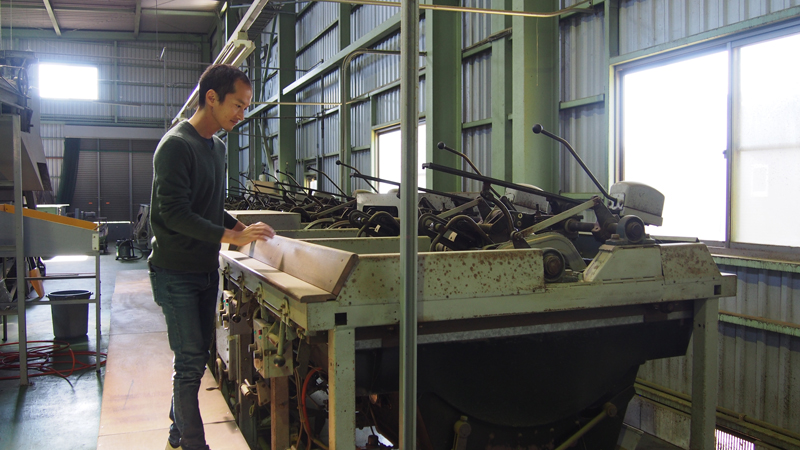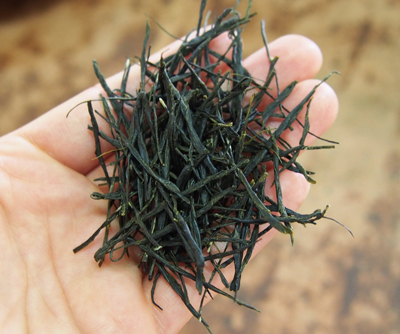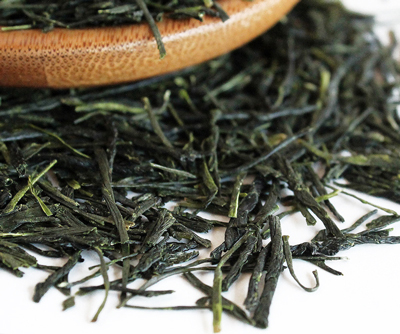Aracha (荒茶) - "Naked" Sencha
 Shutaro Hayashi at his on-farmsite factory, close to the action no middle men or additional processors
Shutaro Hayashi at his on-farmsite factory, close to the action no middle men or additional processors
Some explanations just don't do it justice. Although the direct translation from its kanji and Chinese characters means "rough" or "unrefined" tea and other sources also define it at a superficial level as such, aracha can be anything but.
Especially in the case of small organic tea producers in Japan, the more appropriate and accurate meaning of aracha should be "natural" tea. Aracha is minimally intervened green tea, and may often include some stems and leaf size variation. Sencha, including many high grades, is commonly made by blending aracha from different growers and/or harvests, carefully sorted then finished (e.g. additional light firing) in order to achieve a final product with a specific taste and appearance. Whilst regular blended sencha may meet certain cultural expectations of providing consistency in product, it is aracha that gives clearer indication of the grower's prowess and an appreciation for seasonality.
At Obubu farms in Wazuka, Kyoto where they not only grow but run education tours about tea farming, they are stewards of the aracha story. On our recent visit, guide Simona commented, "aracha allows the farmer to express themselves and maintain the integrity of season and area". Read Obubu's full take on the subject.

At Obubu Farms: hand-processed sencha (aracha) - long wirey leaves, non-consistent shape, stems visible
The aracha concept is very similar to the Chinese concept of "maocha" (毛茶), a semi-finished tea that allows buyers to taste the true nature before requesting for a final finish (e.g. compressing, shaping, sorting) or in the case of a good organic crop, purposely enjoyed as is. In both China and Japan, growers and those who've been put onto the game also refer these kinds of good harvest, minimally processed teas as "farmers' tea" or "farmers' choice".


